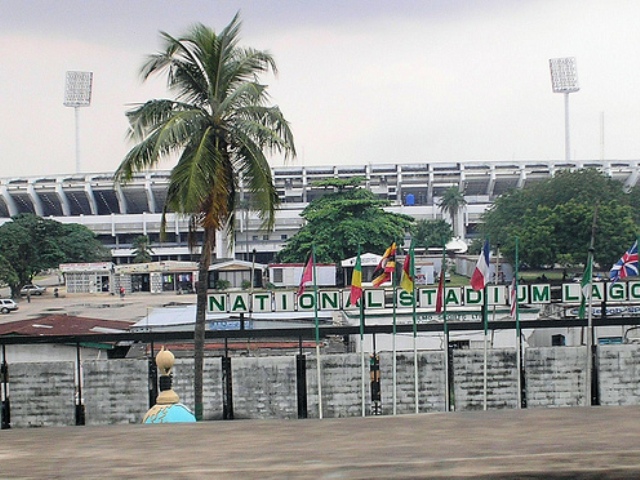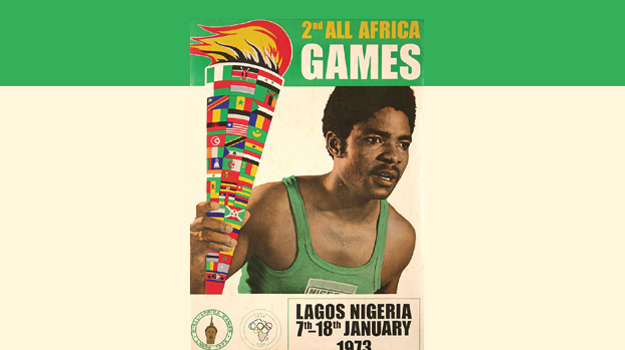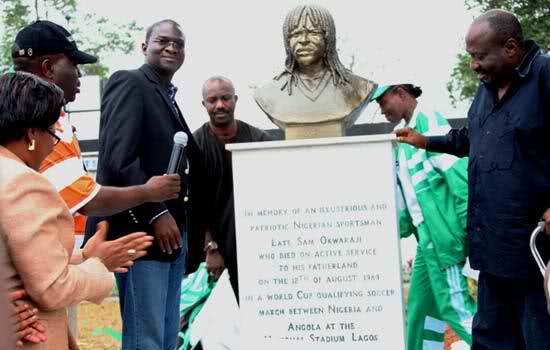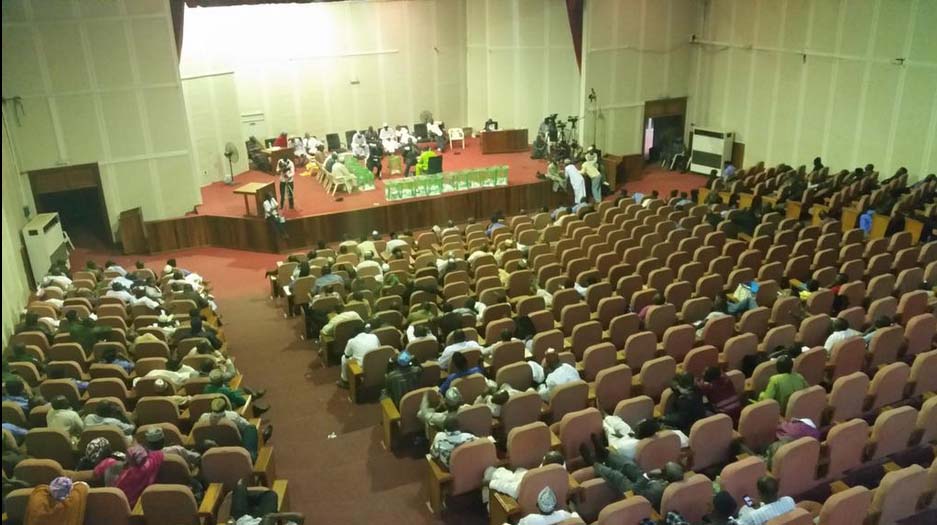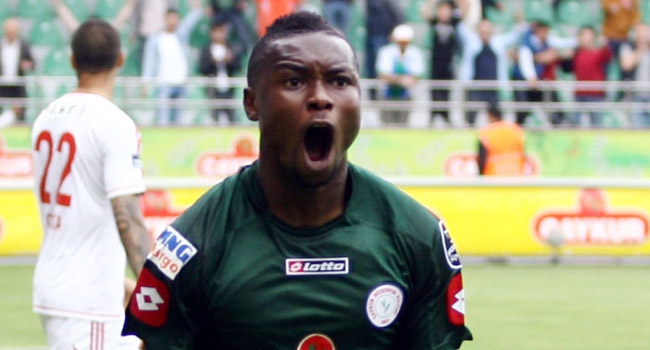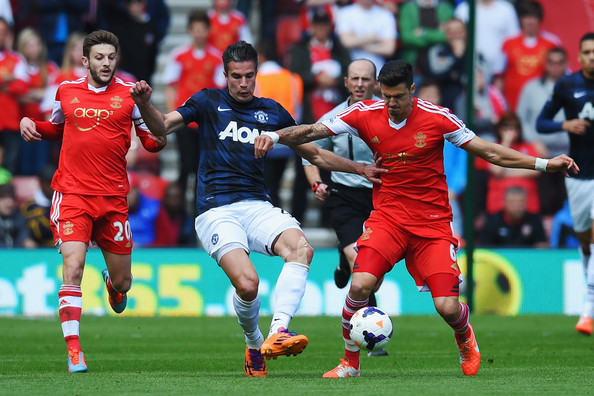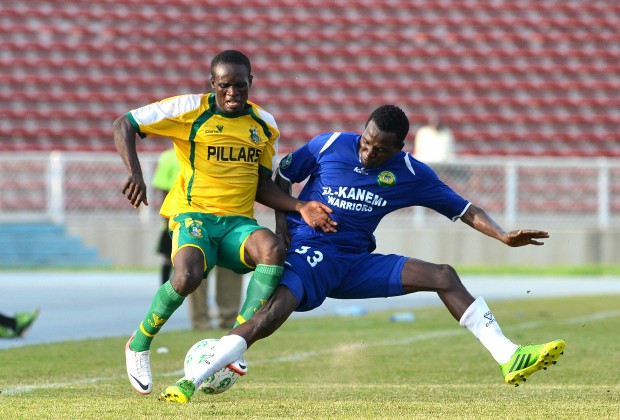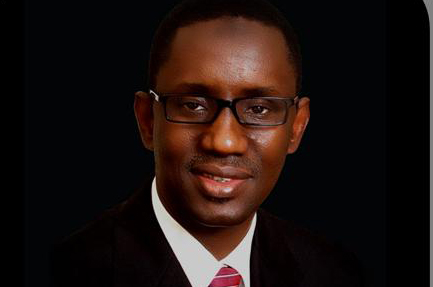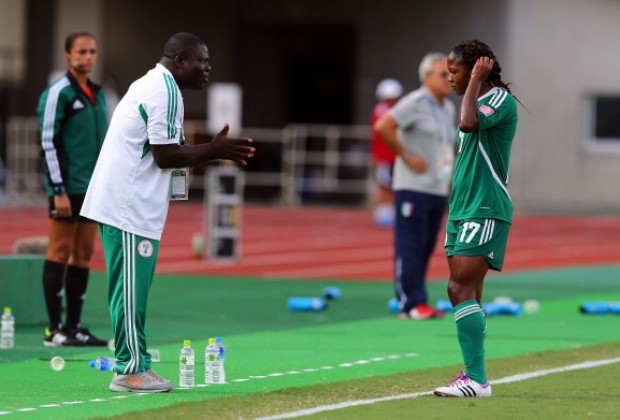“Today is my birthday, but at 42, there’s nothing to celebrate. I’ve been left to rot.”
If the National Stadium in Surulere, Lagos could talk like the donkey who spoke to Balaam in the Bible, those would be its exact words to Nigerians as it marks the anniversary of its inauguration.
Once Segun Odegbami, Sam Okwaraji, and Sunday Oliseh showed their soccer prowess in the edifice that was the pride of the nation.
But how times have changed.
Advertisement
Now, workmen in shorts and t-shirts or Mama Put in iro and buba are seen panel-beating vehicles to shape or cooking stew to taste.
A journalist with a camera is viewed with suspicion inside the premises but stealthily the job is done.
A peep through the well barricaded entrance into the main bowl reveals a patchy pitch, a worn out tartan track, collapsed seating terraces, and a scoreboard giving the time as 3.37pm at noon.
Advertisement
IN THE BEGINNING
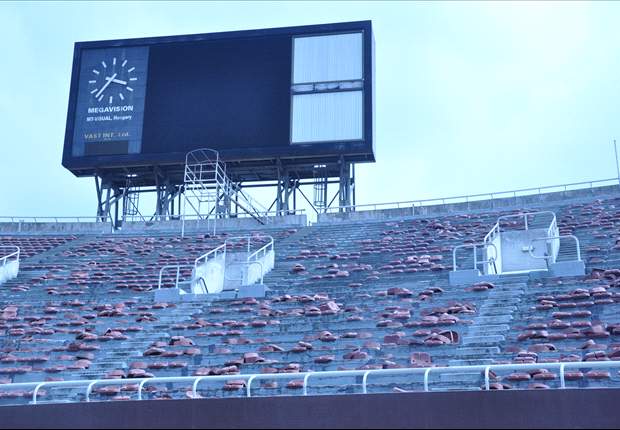
The stadium was built in 1972 with a capacity of 55,000.
The capacity was later reduced to 45,000 in 1999 but the record attendance is 85,000 and that was in the final match of the Africa Cup of Nations in 1980 between Nigeria and Algeria.
Before then, it hosted the 1973 All Africa Games, the purpose why it was built in the first place.
At the games, Nigeria came second behind Egypt, with 18 gold, 25 silver, and 20 bronze medals.
Advertisement
But football remains the most indelible memory.
FOOTBALL MEMORIES
The Green Eagles comprising captain Christian Chukwu, Muda Lawal, Adokie Amiesimaka, Henry Nwosu, Felix Owolabi and Odegbami to mention but four (4) and two (2) – the current age of the stadium – defeated Algeria 3-0 in that memorable final 34 years ago.
For those who didn’t see Odegbami and Amiesimaka run down the flanks in ‘mathematical’ and ‘chief justice’ styles during the 1980 tournament, surely saw Austin Okocha’s mesmerising dribbles 20 years later when Nigeria co-hosted the tournament with Ghana.
Advertisement
The Super Eagles led by captain Oliseh lost to Cameroon in the final on this same pitch but can anyone forget Okocha’s equaliser in the match?
Or Victor Ikpeba’s reactions after the penalty miss?
Advertisement
What about Julius Aghahowa’s goal against Senegal that rescued the Super Eagles from elimination in the quarter finals?
Super Eagles hardly score seven goals in a match but they did it inside the main bowl of the National Stadium.
Advertisement
Four goals from Rashidi Yekini and one each from Samson Siasia, Friday Elaho, and Finidi George in his debut, condemned Burkina Faso to a 7-1 defeat in July 1991.
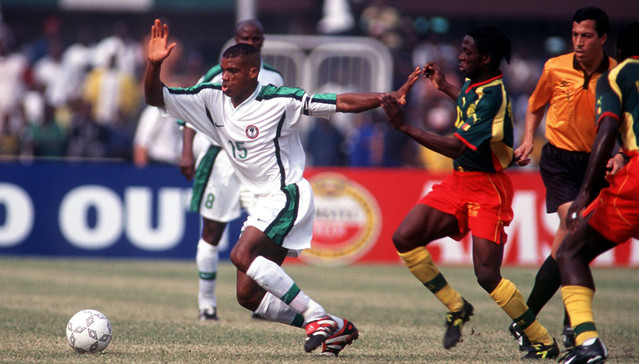
MORE MEMORIES
The tracks may have taken over by elements but it was where Olympic medallist Mary Onyali, Falilat Ogunkoya, Chidi Imoh, Innocent Egbunike and co once created records.
Advertisement
The stands where Rafiu Ladipo and many other fans sat to cheer their darling Green/Super Eagles to victory now have uprooted seats.
The underground dressing room where players and match officials made use of now has refuse lining the outside.
Let’s forget about the toilets overflowing with human waste.
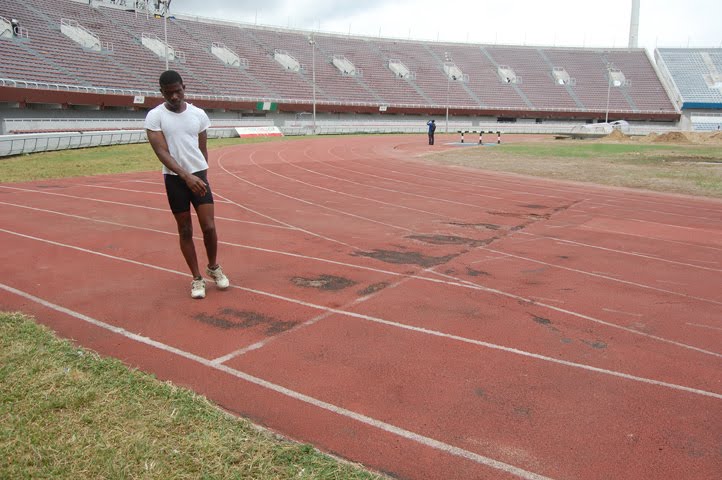
NEW ‘LANDLORDS’
The stadium is an icon, but it’s just sitting there rotting but not for some, though.
There are different companies selling sports merchandise in the sports arena. And since they are sports inclined, they are not part of the ‘landlord’ we are talking about.
A sports person, like you and me, needs food to survive so Ojez fast food and restaurant, Ojez Chinese restaurant and other Nigerian restaurants could be exempted from the ignoble list.
The jury is still out though, if one can exclude Rosellas amusement parks and event centre from the list.
Sadly, the stadium has been taken over by squatters, mechanic workshop owners and staff and their clients, ‘Zoological garden’ of reptiles and the likes, ladies of easy virtues and their male customers, hemp smokers and ‘area boys’, parking lot entrepreneurs, beer parlour owners and clients, ‘churches’ and ‘mosques’.
The last football match that drew a large crowd was the LG Cup match between Nigeria and Senegal in April 2004.
But the crowd paled in significance when thousands of job seekers converged on the National Stadium during the aptitude test organised by the Nigerian Immigration Service (NIS) in March 2014.
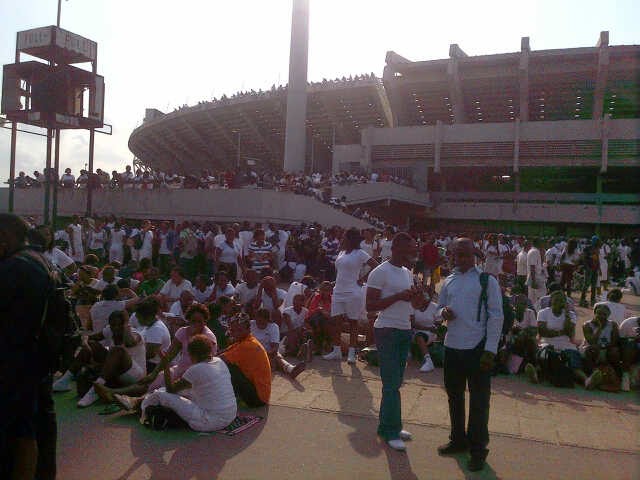
RESCUE MISSION?
In September 2012, the Federal Executive Council had set up a committee to look into the mode of maintenance of the six federal stadia – National Stadium being one of them.
That committee in turn set up a technical sub-committee, which would in collaboration with the Bureau of Public and Enterprise and Infrastructure Concession Regulatory Commission recommend the most viable option for the maintenance of the stadia.
The technical committee recommended the involvement of private sector participation in the management and operations of the stadia with concession as the preferred approach.
Two years down the line, it’s the same sorry state of the Surulere edifice.
And Mr. Francis Gbiri, the head of the National Sports Commission liaison office inside the complex, is in a mournful mood for a different reason.
“I just lost my sister and I’m not in the mood to talk,” he told this reporter.
“Moreover, I don’t talk to journalists on official matters. If you have anything personal to discuss with me, then no problem. We have a media department that deals with journalists like you.”
He gives the name and number of the person but when pressed further to speak on the latest on the concession arrangement as well as the state of the stadium he referred this reporter to his “oga at the top”.
“It’s beyond me. I’m not competent enough to speak on those issues. I’ll give you the number of the DG (which he does) so you can call him. He’s in a better position to talk about the concession,” he said.
“As for the condition of the stadium now, even the minister is aware of it. He came here the other day and saw the mess himself. You can call him as well.”
Getting a response from calls and messages to Tammy Danagogo, the sports minister, and Gbenga Elegbeleye, the director-general of the NSC, is akin to drawing water from a rock.
A spoonful came out though in a terse reply from the DG via SMS.
“The process is on,” he said on the concession.
Mum was the word with Julius Ogunro, the special assistant to Bolaji Abdulahi, the sports minister who oversaw the concession process.
Mum was the word also with Patrick Omorodion, the special assistant to the current minister, Danagogo.
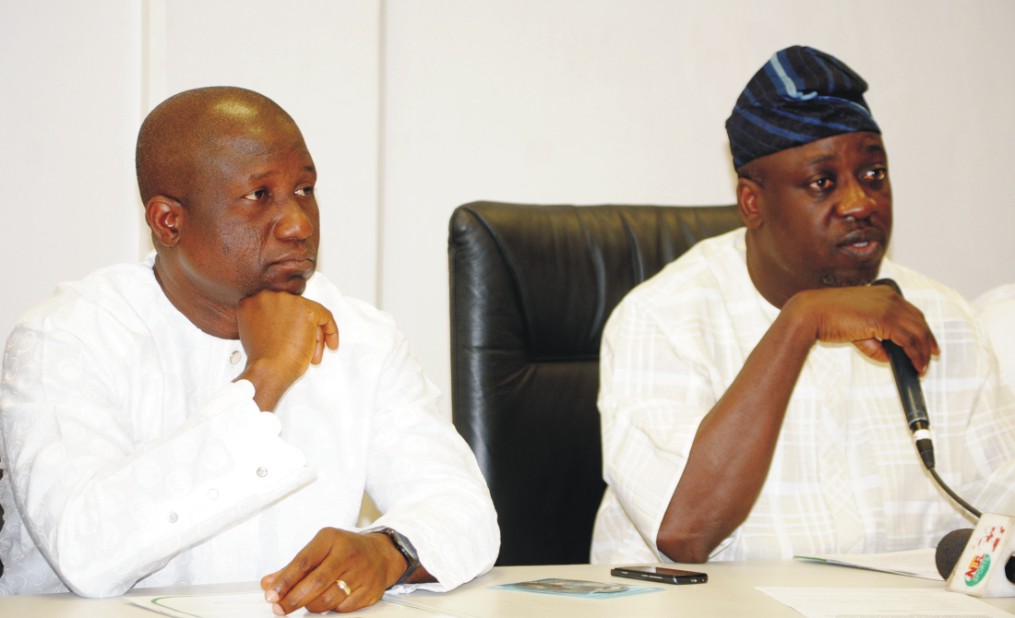
SAM IS DEAD, NATIONAL STADIUM IS DEAD…
But another Patrick, this time, an Okwaraji is not feeling too well himself.
Patrick wants the government to rename the stadium after his brother, Sam.
Sam Okwaraji died in active service, 25 years ago, after he collapsed in the 77th minute of a 1990 World Cup qualifier between Nigeria and Angola on August 12, 1989.
Though the statue of the late midfielder, built by Lagos state government, adorns the entrance of the stadium, that’s where the remembrance ends.
The stadium is rotting in obscurity, like the memory of Sam Okwaraji.
Surely, Sam deserves to be associated with this befitting edifice at it immaculate state when General Yakubu Gowon inaugurated it 42 years ago.
“Today is my birthday, but at 42, there’s nothing to celebrate. I’ve been left to rot.”
Like National Stadium.
Like Sam Okwaraji.
Add a comment
